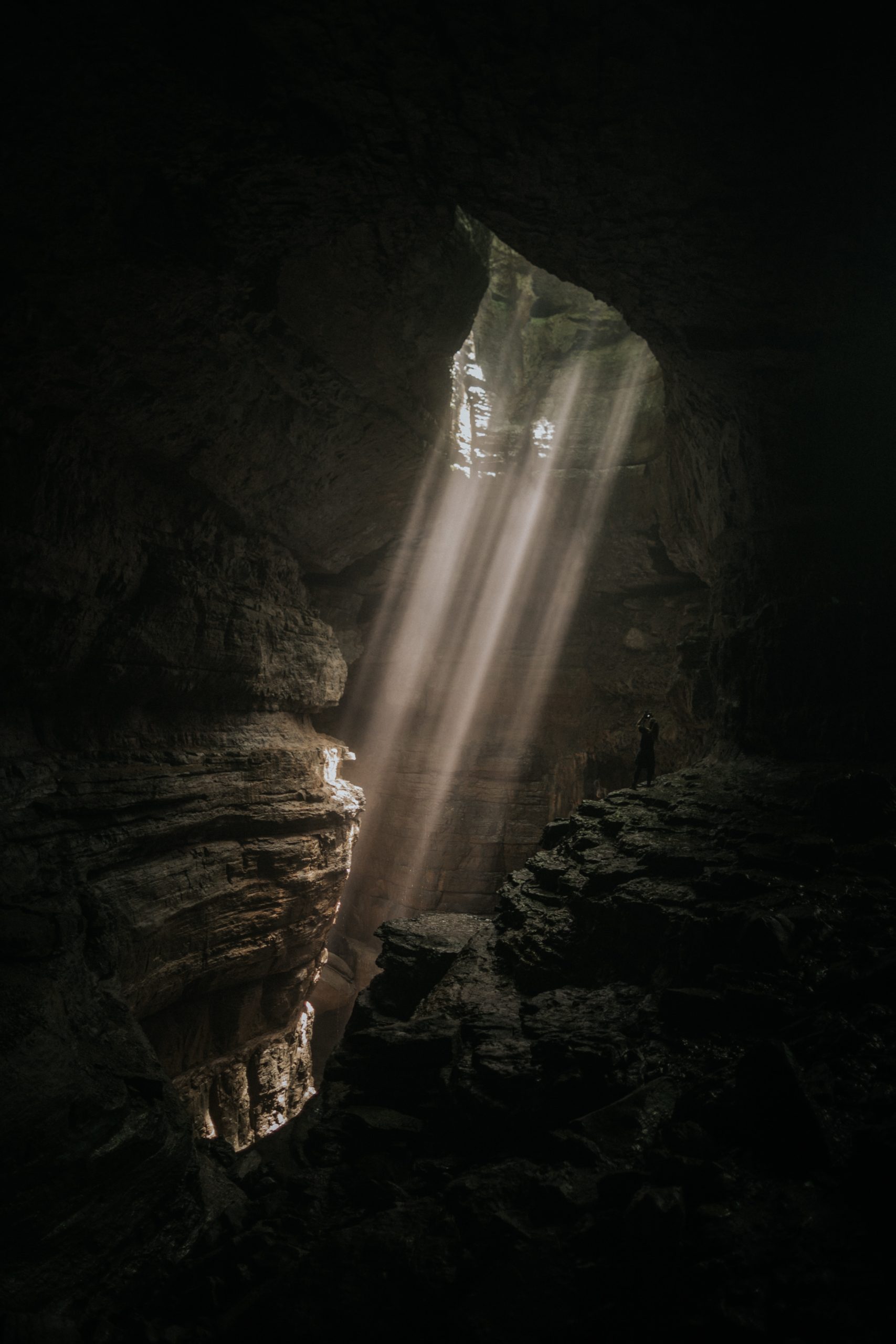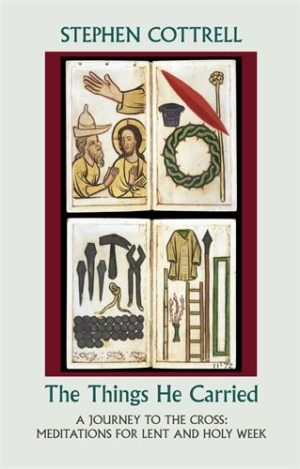



He carried a large wooden beam – one half of a cross.
They handed it to him like it was nothing. Like it could be thrown away; like they were going to throw him away, this thing of terrible beauty.
He held the rough wood in his hands; gripped it, felt its shape, tested its weight, imagined the plane upon it, the axe striking the base of the trunk, the weight of the leaves upon the branches fluttering in the air of a spring day, breathing their last, gasping, falling, crashing down. He saw it dragged away, cut open, dissected, used.
He remembered its growing in the forest. A tiny unfolding. The first leaf unravelling. Felt the sap rising within it: its growing, and its vast potential. He felt its density. This was the hull of a boat, the rafters of a house, the handle of a plough, the shaft of an axe. It contained the strength to support and the durability to hold. It contracted and expanded. It was eye of a needle. It was base of a table. And now a grim vocation: to be the place where death is distributed.
And no one would look him in the eye: not at this point; not as this broad beam was handed out. This was the time to look away, to scan the horizon and search for a new sail. This was the time to think of home and hearth, of logs being thrown on the fire.
He shouldered the weight. It could carry him and it could crush him. He felt its roughness against his rawness. The splinters that pushed into his flesh anticipated the nails that were to follow. It was fruit of the earth and the work of human hands, this wood he carried.
It was half a cross. He didn’t carry the whole thing, though that was how it would usually be remembered. But nobody ever got him right. And he always evaded those who clung too tightly. Just the crosspiece which his hands would be nailed to: he carried it. And he knew that when he reached the place of execution a stake would be ready, and the beam attached to it; and his hands nailed to it – actually his wrists, in-between the bones, so that the flesh wouldn’t tear, and he could hang there longer. He would be hoisted up. It would make a cross; and then his feet would be nailed in place.
But first there was a journey to make: from Pilate’s palace, through the crowded city streets, to the hill of the skull outside the walls, about half a mile. And all this way he half-carried, half-dragged this great girder, this joist from which he would hang.
It was about five feet in length – the height of a small person. It weighed about five stone – as much as a bag of cement. And he was already battered and broken from being flogged. And the crowd that had welcomed him days earlier now bayed for blood. And the pallor and expectancy of death was already upon him.
He emptied himself, taking the form of a slave …
He humbled himself and became obedient to the point of death …
The Romans were fond of crucifixion. It was their execution of choice. They liked its precision. It produced the maximum amount of pain and a death struggle of adjustable duration. They had so mastered this technology of killing that they could decide how much it hurt and how long it lasted. The clever bit was the nail through the feet. A body just suspended by the wrists will soon develop agonizing cramp. The ribs are drawn upwards and the chest is fixed in position as if the victim has just drawn a large breath, but cannot breathe out. The metabolic rate surges and within an hour or so the victim dies of suffocation. But by nailing the feet the condemned man could buy time by pushing himself up on the nails and by stretching his legs could raise his body a few inches and relieve the tension in his chest and arms.
But perching with the full weight of your body on a square nail driven though the middle bones of your feet brings intolerable pain. The victim soon lets his knees sag and is once more hanging from the wrists, and so the cycle repeats itself, over and over again, sometimes for as long as three days. Death comes slowly.
And everyone knew about crucifixion. Over a thousand years thousands of people died this way. There were times when the Romans’ circus arenas became forests of crosses.
As he carried this weight through the streets Jesus knew what was in store for him.
We imagine him, stumbling through the narrow, crowded alleys of Jerusalem on a hot, humid Friday afternoon: we sense the frenzied animation of the crowd; we see the spiteful excitement etched into the faces of those who shout and jeer; we feel their spittle on our face; we see their hands waving, their fingers jabbing; we smell the rank odour of blood and sweat; we feel the weight of the cross pressing us down; and then we hear the blood lust of the crowd boil over. We know in our hearts how easy it is to run with the crowd, and we know how we would have responded. With horror, we see it is our hands upon him; our fingers pointing; our voices jeering.
And then we see him fall – as if in slow motion – tumbling, stumbling, reaching out for a support that has been taken away, vanquished: his hands sliding in the dust, straining for purchase; the beam itself crashing down, the crowd laughing, the soldiers who accompany him pointing, heaving him to his feet, bidding him continue.
And suddenly it seems to mean nothing. Another useless dreamer. He is just another innocent man going to his death, like so many thousands and millions of other innocent people have died ugly and anonymous deaths through the whole bloody failure of human history– in gas chambers, killing fields, firing squads, trenches, collapsing buildings, atomic explosions, bombed trains, the list goes on and on. Two million men, women and children in Hiroshima, six million in Nazi death camps… How many by Stalin, or Pol Pot, or in Rwanda, or Kosovo, or Darfur, or all those barbarous killings that we cannot remember where whole communities were wiped out? And here he is, one more man going to his death, silent before his accusers, stoical in his suffering, useless to stem the flow of hatred and revenge that consumes the human heart. After the defeat of the Spartacus uprising in 71 BC, 6,500 rebellious slaves were crucified. Their crosses lined the Appian Way from Cappadocia to Rome. Their names are forgotten, as in the end all names are forgotten. But the carpenter’s son from Nazareth – this man stumbling to this death – he is remembered. And of all the things we remember about his life and teaching, it is this event – his dying – that we remember most. It is why you are reading this book. And the means of his death – the cross – we remember it. Why? Is it because this man is not just a man – not less than a man, but God contained within what it is to be man? And is his suffering and his dying not just one more notch carved in the endless torment of human misery, but God sharing it, God involved in the world he made, God stretched out on this fearful piece of wood?
When I am lifted up …
He is face to face now with our barbarity. He carries the cross, and he treads a path of suffering, step by painful step, that is the suffering of the world. He carries the battered woundedness of everyone who has been trapped and convicted by the foul depravity of all the awfulness we do to each other. He can taste its breath. He can feel its hands upon him. But he carries something else. A light flickering within him that will not be snuffed out. Not when the soldiers mock him; not when he is stripped and beaten; not when they drive in the nails; not when he hangs there ridiculed, forsaken, defeated. He carries half a cross; that half which is God’s determination to plumb the depths of that dark river which is the human heart. But the other half is entirely something else: something that also needs to be nailed down and joined up. He is reaching into the bloody mess in order to redeem it. He carries the purposes of God. They will be shaped into a cross.
Hold a piece of wood. Imagine where it came from. Imagine it growing in the forest. Imagine who cut it down and who shaped it into this thing you are holding.
If you are in a group, ask each person to bring something made of wood. Show each other what you have brought. Talk about how it was made and where it came from.
If you are on your own, just hold the wood and think about it.
Hold something heavy. Feel its weight. Hold it for as long as possible, until you can hardly hold it any longer.
If you are in a group, pass the weighty object from one person to the next. Afterwards talk about how it felt.
If you are on your own, just hold it and think about its weight.